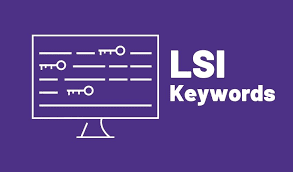[This is a test site and all posts are generated with ChatGPT unless indicated otherwise.]
In the vast digital landscape, where information is abundant and attention spans are limited, keywords play a crucial role in capturing the interest of online users. Keywords are the foundation of effective content creation and serve as the bridge between what people are searching for and the content that provides relevant solutions and information. By understanding the importance of keywords, content creators can optimize their content to attract the right audience and drive organic traffic to their websites.
Keywords act as the guiding compass that helps content creators understand the language, intent, and interests of their target audience. By strategically incorporating relevant keywords, content can be tailored to match the search queries of users, making it more discoverable and increasing its chances of being ranked higher in search engine results.
Role of Keywords in Search Engine Optimization (SEO)
Search engine optimization (SEO) is the practice of optimizing web content to improve its visibility and ranking in search engine results pages (SERPs). Keywords are at the core of SEO, acting as the fundamental building blocks for optimizing content and improving its search engine performance.
Search engines, such as Google, rely on keywords to understand the context and relevance of web pages. When users enter a search query, search engines analyze the keywords present in web pages to determine their relevance and rank them accordingly. By incorporating the right keywords into their content, content creators can increase their chances of appearing in relevant search results and attracting organic traffic.

Effective keyword usage in SEO involves not only understanding the primary keywords that represent the core topics of the content but also identifying related keywords, synonyms, and variations that users might utilize in their search queries. This broader understanding of keywords enables content creators to optimize their content in a way that aligns with the search engine algorithms and user intent, enhancing the visibility and accessibility of their content.
In the following sections, we will explore different types of keywords that content creators can leverage to optimize their content effectively. Understanding and incorporating these various types of keywords will empower content creators to reach their target audience more effectively, improve their organic search rankings, and ultimately drive more traffic to their websites.
Broad Keywords and Long-tail Keywords
1. Broad Keywords
Broad keywords, also known as short-tail keywords, are concise and general terms that capture a wide range of topics or concepts. These keywords typically consist of one or two words and are more generic in nature. Broad keywords have high search volumes and competition due to their broad nature, making it challenging to rank for them. They tend to generate a large volume of search results and attract a broad audience.
Examples
- “Shoes”
- “Digital marketing”
- “Healthy recipes”
Broad keywords are valuable when you aim to cast a wide net and attract a large audience to your website. However, they may lack specificity and can be highly competitive, making it more challenging to rank for them in search engine results.
2. Long-Tail Keywords
Long-tail keywords are more specific and longer phrases that target niche topics or cater to a particular audience with a focused intent. These keywords typically consist of three or more words and are more descriptive in nature. Long-tail keywords have lower search volumes compared to broad keywords but tend to have higher conversion rates. They help you reach a more targeted audience who are actively seeking specific information or products.
Examples
- “Women’s running shoes for flat feet”
- “Digital marketing strategies for small businesses”
- “Healthy vegetarian dinner recipes under 30 minutes”
Long-tail keywords are valuable when you aim to attract a highly targeted audience who are more likely to convert. They offer better opportunities for ranking higher in search engine results as they face less competition. By addressing specific user queries and providing tailored content, you can attract users who are closer to the decision-making stage.
Long-tail keywords also allow you to create more focused and niche content, catering to the unique needs and interests of your target audience. They help you establish your expertise in a specific area and build a loyal following of users interested in your niche.
A. Informational Keywords

Informational keywords, also known as research keywords or how-to keywords, are search terms that users enter when seeking specific information or answers to their questions. These keywords indicate that the user is in the early stages of their search process and is looking for educational or informative content rather than making a transactional or commercial inquiry. Informational keywords are essential for content creators to provide valuable insights, tutorials, guides, or explanations to their target audience.
The purpose of targeting informational keywords is to establish your brand as a reliable source of information and to build trust with your audience. By creating content that satisfies the informational needs of users, you position yourself as an authoritative figure in your industry or niche. Furthermore, informational keywords can help attract a broader audience, increase organic traffic to your website, and nurture leads through the educational content you provide.
Examples of Informational Keywords
Here are some examples of informational keywords across different industries:
Technology:
- “How to set up a wireless router”
- “What is cloud computing?”
- “Best practices for mobile app development”
Health and Fitness
- “Benefits of yoga for stress relief”
- “How to lose weight naturally”
- “Nutrition guide for building muscle”
Personal Finance
- “How to create a budget for beginners”
- “Investment strategies for retirement”
- “Understanding credit scores and their importance”
How to Optimize Content for Informational Keywords
To effectively optimize your content for informational keywords, consider the following steps:
1. Keyword Research
Identify relevant informational keywords that align with your target audience’s interests and intent. Utilize keyword research tools such as Google Keyword Planner, SEMrush, or Ahrefs to find popular informational queries related to your industry.
2. Create High-Quality Content
Develop comprehensive and informative content that directly addresses the user’s query. Focus on providing in-depth explanations, step-by-step guides, or actionable tips. Consider using different formats such as articles, blog posts, videos, infographics, or tutorials to cater to various user preferences.
3. Structured Content
Organize your content in a logical and easily digestible manner. Use headings, subheadings, bullet points, and other formatting techniques to enhance readability and facilitate skimming. This helps users quickly find the information they’re seeking and improves their overall experience.
4. Answer User Questions
Identify common questions related to your target informational keywords and address them within your content. Use headings or dedicated sections to provide clear and concise answers. This approach demonstrates your expertise and ensures your content aligns with user expectations.
5. Long-Form Content
Informational content often benefits from being comprehensive and detailed. Aim for longer-form content that covers the topic extensively. This provides a richer user experience and increases the likelihood of your content being shared and linked to by other authoritative sources.
6. On-Page Optimization
Optimize your content for search engines by including the informational keyword in the page title, meta description, headers, and throughout the content body. However, prioritize providing value to users over keyword stuffing, as search engines prioritize quality content.
7. Internal and External Linking
Include relevant internal links to other pages on your website that provide further information on related topics. Additionally, consider including external links to credible sources that support or provide additional context for the information you’re presenting.
By following these optimization strategies, you can improve the visibility and ranking of your content for informational keywords, attract a wider audience, and establish your brand as a go-to source for valuable information.
B. Commercial Keywords

Commercial keywords, also known as transactional keywords, are search terms that indicate a user’s intention to make a purchase or engage in a transaction. These keywords are used by individuals who have progressed further down the sales funnel and are actively seeking products, services, or solutions to fulfill their specific needs or desires. Targeting commercial keywords allows businesses to capture the attention of potential customers who are ready to make a purchasing decision.
The purpose of optimizing content for commercial keywords is to attract and convert users who are actively searching for products or services in your industry. By targeting these keywords, businesses can increase their visibility in search engine results and position themselves as a viable solution provider. Optimizing content for commercial keywords is crucial for driving sales, generating leads, and maximizing revenue.
Examples of Commercial Keywords
Here are some examples of commercial keywords across different industries:
E-commerce
- “Buy iPhone 12 online”
- “Best deals on laptops”
- “Discounted running shoes”
Travel and Tourism
- “Book flights to Paris”
- “All-inclusive beach resorts”
- “Vacation packages for Hawaii”
Home Improvement
- “Affordable kitchen cabinets”
- “Professional painting services”
- “Buy energy-efficient windows”
How to Optimize Content for Commercial Keywords
To effectively optimize your content for commercial keywords and drive conversions, consider the following strategies:
1. Keyword Research
Conduct thorough keyword research to identify relevant commercial keywords that align with your products or services. Utilize keyword research tools such as Google Keyword Planner, SEMrush, or Moz to discover high-intent keywords with reasonable search volumes and competition.
2. Product and Service Descriptions
Craft compelling and persuasive descriptions for your products or services. Highlight key features, benefits, and unique selling points that differentiate your offerings from competitors. Include the targeted commercial keywords naturally within the descriptions while ensuring the content remains informative and engaging.
3. Clear Call-to-Actions (CTAs)
Guide users towards the desired action by including clear and prominent CTAs throughout your content. Use actionable language and specific instructions to encourage users to take the next step, such as “Buy Now,” “Sign Up Today,” or “Get a Free Quote.”
4. User Reviews and Testimonials
Leverage the power of social proof by showcasing positive user reviews and testimonials. Include testimonials that highlight the benefits and positive experiences customers have had with your products or services. Testimonials help build trust and confidence in potential buyers, making them more likely to convert.
5. Promotions and Discounts
Highlight any ongoing promotions, discounts, or special offers related to your products or services. Incorporate commercial keywords in your promotional content to attract users actively seeking deals or savings. This can help drive urgency and encourage immediate action.
6. Optimize Product Pages
For e-commerce businesses, optimize individual product pages by including relevant commercial keywords in the page title, meta description, headers, and product descriptions. Make sure the content is informative, visually appealing, and easy to navigate. Include high-quality product images, detailed specifications, pricing information, and any relevant customer reviews.
7. Local Optimization
If your business has a physical location, optimize content for local commercial keywords. Incorporate location-specific keywords to target users searching for products or services in a particular area. This can be achieved through local landing pages, Google My Business optimization, and local directories.
By following these optimization strategies, you can enhance your content’s visibility and relevance for commercial keywords, attract potential customers ready to make a purchase and maximize your conversion opportunities.
D. Transactional keywords

Transactional keywords are search terms used by individuals who are ready to complete a specific action, such as making a purchase, signing up for a service, or engaging in a transaction. These keywords indicate a high level of commercial intent and reflect a user’s intention to take a specific action. Optimizing content for transactional keywords allows businesses to capture the attention of potential customers who are in the final stages of the buying process.
The purpose of targeting transactional keywords is to drive conversions and facilitate specific actions from users. By optimizing content for these keywords, businesses can increase their chances of attracting users who are actively seeking to make a purchase or engage in a transaction. Optimizing content for transactional keywords is crucial for maximizing revenue, driving sales, and achieving business objectives.
Examples of Transactional Keywords
Here are some examples of transactional keywords across different industries:
E-commerce
- “Buy iPhone 12 Pro Max online”
- “Discount code for clothing”
- “Order personalized gifts”
Software
- “Download video editing software”
- “Free trial of project management tool”
- “Upgrade to premium antivirus software”
Travel and Tourism
- “Book hotel in New York City”
- “Rent a car for vacation”
- “Purchase travel insurance online”
How to Optimize Content for Transactional Keywords
To effectively optimize your content for transactional keywords and drive conversions, consider the following strategies:
1. Keyword Research
Conduct thorough keyword research to identify relevant transactional keywords that align with your products or services. Utilize keyword research tools such as Google Keyword Planner, SEMrush, or Moz to discover high-intent keywords with reasonable search volumes and competition.
2. Product or Service Pages
Optimize your product or service pages to align with transactional keywords. Include the targeted keywords in the page title, meta description, headers, and within the product descriptions. Highlight key features, pricing information, and any special offers or incentives to encourage users to take immediate action.
3. Clear Call-to-Actions (CTAs)
Include clear and compelling CTAs throughout your content to guide users towards the desired action. Use actionable language and specific instructions to prompt users to make a purchase, sign up, or engage in the transaction. Examples of effective CTAs include “Buy Now,” “Sign Up Today,” or “Get Started.”
4. Optimize Checkout and Conversion Funnel
Streamline the checkout or conversion process to make it easy for users to complete the desired action. Remove any unnecessary steps, simplify forms, and provide clear instructions at each stage. Optimize your website for speed and mobile responsiveness to ensure a seamless user experience.
5. Reviews and Testimonials
Display customer reviews and testimonials on your website to build trust and confidence in potential buyers. Highlight positive experiences, customer satisfaction, and the value your product or service provides. Incorporate transactional keywords in these testimonials to reinforce their relevance.
6. Remarketing and Follow-Up
Implement remarketing campaigns to target users who have shown interest in your products or services but haven’t completed the transaction. Utilize email marketing and personalized follow-up strategies to nurture leads and encourage them to take the desired action.
7. Competitive Pricing and Incentives
Offer competitive pricing, discounts, or incentives to entice users to choose your product or service over competitors. Highlight any special promotions, limited-time offers, or exclusive deals to create a sense of urgency and drive immediate conversions.
By following these optimization strategies, you can improve your content’s visibility and relevance for transactional keywords, attract potential customers ready to take action, and maximize your conversion opportunities.
E. Local keywords

Local keywords are search terms that include specific geographic locations and indicate a user’s intent to find products, services, or information within a particular area. These keywords are highly relevant for businesses targeting a local customer base. Optimizing content for local keywords allows businesses to connect with potential customers in their vicinity and increase their visibility in local search results.
The purpose of targeting local keywords is to attract customers who are actively seeking products or services in a specific location. By optimizing content for local keywords, businesses can enhance their local search engine optimization (SEO) efforts and improve their chances of appearing in the “Local Pack” or “Local 3-Pack” of search results. This helps increase brand awareness, drive foot traffic to physical stores, and generate leads from local customers.
Examples of Local Keywords
Here are some examples of local keywords across different industries:
Restaurant
- “Italian restaurant in New York City”
- “Best sushi near me”
- “Coffee shop in downtown Chicago”
Service-based Business
- “Plumber in Los Angeles”
- “HVAC repair services in Austin”
- “Personal trainer near San Francisco”
Retail Store
- “Clothing store in Miami”
- “Electronics shop near me”
- “Bookstore in Seattle”
How to Optimize Content for Local Keywords
To effectively optimize your content for local keywords and increase your visibility in local search results, consider the following strategies:
1. Google My Business
Create or claim your Google My Business listing and ensure all information is accurate and up-to-date. Include your business name, address, phone number (NAP), website URL, and operating hours. Select the appropriate categories that best represent your business. Encourage customers to leave reviews, as positive ratings can improve your visibility in local search results.
2. Location-Specific Landing Pages
Create dedicated landing pages on your website that target specific locations or regions. Include relevant local keywords in the page titles, headers, meta descriptions, and content. Provide valuable information about your products or services in relation to the targeted location. Embed Google Maps to showcase your business’s physical location.
3. Online Directories and Citations
Ensure your business is listed accurately in online directories such as Yelp, Yellow Pages, and industry-specific directories. Consistency in your business’s NAP information across these directories is crucial for local SEO. Aim for high-quality directories and seek opportunities for citations from reputable local sources.
4. Localized Content
Develop content that specifically addresses local topics, events, or news related to your industry or community. Write blog posts or articles that highlight local attractions, collaborate with other local businesses for cross-promotion, or participate in local events. This helps establish your business as an active member of the local community.
5. Location-Specific Keywords in Metadata
Incorporate local keywords in your metadata, including page titles, meta descriptions, headers, and image alt tags. For example, instead of “Coffee Shop in Downtown,” use “Best Coffee Shop in Downtown Seattle.” This signals to search engines that your content is relevant to local search queries.
6. Local Reviews and Testimonials
Encourage customers to leave reviews on platforms such as Google, Yelp, or TripAdvisor. Positive reviews can boost your credibility and increase the likelihood of appearing in local search results. Respond to reviews promptly and engage with customers to show your commitment to providing excellent service.
7. Local Schema Markup
Implement local schema markup on your website to provide search engines with structured data about your business, such as your address, phone number, business hours, and customer reviews. This helps search engines understand your business’s location and improves the chances of appearing in local search results.
By following these optimization strategies, you can improve your visibility in local search results, attract local customers to your business, and increase your chances of converting local leads into loyal customers.
F. LSI keywords

LSI (Latent Semantic Indexing) keywords are words or phrases that are semantically related to a primary keyword or topic. They are not synonyms but rather words that are commonly found together in a given context. LSI keywords help search engines understand the content’s context and relevance, improving the overall search engine optimization (SEO) of a page. They play a crucial role in enhancing the user experience and providing more accurate search results.
The purpose of using LSI keywords in your content is to demonstrate to search engines the topical relevance and depth of your content. By incorporating LSI keywords, you can improve the overall context and understanding of your page, thereby increasing its chances of ranking higher in search engine results. LSI keywords also help attract a more targeted audience, as they address related concepts and offer more comprehensive coverage of a particular topic.
Examples of LSI Keywords
Here are some examples of LSI keywords
- Primary Keyword: “healthy eating”
LSI Keywords: nutrition, balanced diet, clean eating, meal planning, healthy recipes, dietary guidelines - Primary Keyword: “weight loss”
LSI Keywords: calorie intake, exercise routine, healthy habits, portion control, diet plans, metabolism - Primary Keyword: “organic gardening”
LSI Keywords: sustainable farming, soil fertility, companion planting, natural pest control, organic seeds, composting
How to Find and Use LSI Keywords for SEO
To find and use LSI keywords effectively for SEO, consider the following strategies:
1. Conduct Keyword Research
Start with your primary keyword and use keyword research tools such as Google Keyword Planner, SEMrush, or Moz to identify related keywords and phrases. These tools often provide suggestions and variations that can serve as LSI keywords.
2. Analyze Search Engine Results
Perform a search using your primary keyword and analyze the search engine results page (SERP). Look for common themes, related terms, and phrases used in the top-ranking pages. These terms can help you discover relevant LSI keywords to incorporate into your content.
3. Utilize Keyword Research Tools
Use LSI keyword research tools such as LSIGraph, LSIKeywords.com, or LSI Keyword Generator to generate a list of semantically related keywords based on your primary keyword. These tools analyze search engine data and provide you with additional keywords to consider.
4. Explore Related Searches and Autocomplete
Take advantage of Google’s “Related Searches” at the bottom of the SERP and the autocomplete feature. These sections often provide valuable insights into popular searches and related terms that you can incorporate as LSI keywords.
5. Incorporate LSI Keywords Naturally
Once you have identified relevant LSI keywords, incorporate them naturally throughout your content. Ensure that they flow seamlessly within the context of your writing and contribute to a comprehensive coverage of the topic. Avoid keyword stuffing or forcing LSI keywords where they don’t fit naturally, as it can negatively impact the user experience and SEO.
6. Use LSI Keywords in Headings and Subheadings
Include LSI keywords in your headings and subheadings to further reinforce the topical relevance of your content. This helps search engines understand the structure and context of your page, improving its visibility in search results.
7. Write Comprehensive and Informative Content
Develop high-quality, comprehensive content that covers the main topic in-depth. By providing valuable and relevant information, you naturally incorporate LSI keywords throughout the content, enhancing its overall relevance and user experience.
8. Monitor Performance and Refine
Regularly monitor your content’s performance using SEO analytics tools. Pay attention to the keywords that are driving traffic and engagement. Refine your LSI keyword strategy based on the insights gained and make adjustments as necessary to improve your content’s SEO performance.
By incorporating LSI keywords into your content, you can improve its context and relevance, enhance the user experience, and increase the chances of ranking higher in search engine results.
G. Branded Keywords

Branded keywords are search terms that include the name, slogan, or any other identifiable element of a specific brand. These keywords are directly associated with a particular company, product, or service. Branded keywords are important for businesses to monitor and optimize because they indicate a user’s intent to find information, engage with, or make a purchase from a specific brand.
The purpose of targeting branded keywords is to establish and enhance brand visibility, protect brand reputation, and drive targeted traffic to the brand’s website or other online assets. Optimizing content for branded keywords allows businesses to strengthen their online presence, increase brand recognition, and maintain control over their brand messaging in search engine results.
Examples of Branded Keywords
Here are some examples of branded keywords for well-known companies:
Nike
- “Nike shoes”
- “Nike Air Max”
- “Nike running gear”
Apple
- “iPhone”
- “MacBook Pro”
- “Apple Watch”
Coca-Cola
- “Coca-Cola”
- “Coke”
- “Coca-Cola products”
How to Optimize Content for Branded Keywords
To effectively optimize your content for branded keywords and maximize your brand’s visibility, consider the following strategies:
1. Consistent Branding
Maintain consistent branding across all online platforms, including your website, social media profiles, and other digital assets. Use your brand name, logo, and tagline consistently to reinforce your brand identity.
2. Optimize Website Metadata
Include your brand name in the page titles, meta descriptions, and headers of your website. This helps search engines recognize and associate your content with your brand. Make sure these elements accurately describe your brand and its offerings to encourage click-throughs from search results.
3. Create Branded Landing Pages
Develop dedicated landing pages that specifically target your branded keywords. These pages should provide comprehensive information about your brand, products, or services. Highlight your unique selling points, brand values, and any special offers to entice visitors.
4. Monitor Online Reputation
Regularly monitor search results and online mentions to protect your brand’s reputation. Address any negative reviews or feedback promptly and professionally. Encourage satisfied customers to leave positive reviews and testimonials to enhance your brand’s online presence.
5. Utilize Social Media
Leverage social media platforms to promote your brand and engage with your audience. Optimize your social media profiles with consistent branding, relevant keywords, and links back to your website. Share valuable content, respond to comments, and actively participate in conversations to build brand loyalty.
6. Paid Search Advertising
Consider running paid search advertising campaigns targeting your branded keywords. This ensures that your brand appears prominently in search results and prevents competitors from outranking you for your own brand terms. Paid ads can drive targeted traffic and increase brand visibility.
7. Influencer Partnerships
Collaborate with influencers and industry experts who align with your brand values. By leveraging their reach and influence, you can amplify your brand’s visibility and attract new audiences. Encourage influencers to mention your brand in their content and include branded keywords where appropriate.
8. Brand Monitoring and Analysis
Use online tools and analytics platforms to monitor the performance of your branded keywords. Track search engine rankings, website traffic, conversion rates, and user engagement. Analyze the data to identify areas for improvement and refine your branded keyword optimization strategies.
By optimizing your content for branded keywords, you can enhance brand recognition, establish a strong online presence, and drive targeted traffic to your brand’s digital assets.
Keyword Research Tools

1. Google Keyword Planner
Google Keyword Planner is a free tool provided by Google Ads. It allows you to discover new keyword ideas, explore search volume trends, and get performance insights. It provides data directly from Google’s search engine, making it a valuable tool for understanding keyword popularity and competitiveness.
2. SEMrush
SEMrush is a comprehensive SEO tool that offers a wide range of features, including keyword research. It provides detailed keyword data such as search volume, keyword difficulty, and competitive analysis. SEMrush also offers features for tracking rankings, conducting site audits, and competitor analysis.
3. Moz Keyword Explorer
Moz Keyword Explorer provides insights into keyword opportunities, search volume, and keyword difficulty. It also offers features like organic click-through rate (CTR) analysis and keyword suggestions based on related terms. Moz’s tool helps you understand the potential value and competitiveness of specific keywords.
4. Ahrefs Keywords Explorer
Ahrefs Keywords Explorer is a powerful keyword research tool that provides detailed keyword metrics, including search volume, keyword difficulty, and click-through rate (CTR) estimations. It also offers features for analyzing search trends, finding keyword ideas, and exploring competitor keywords.
Step-by-Step Guide for Conducting Keyword Research
1. Define Your Topic
Start by identifying the main topic or theme for your content. This will serve as the foundation for your keyword research.
2. Brainstorm Seed Keywords
Generate a list of seed keywords that are relevant to your topic. These are general terms that describe the main aspects of your content. For example, if your topic is “healthy recipes,” seed keywords could include “healthy meals,” “nutritious cooking,” or “balanced diet.”
3. Use Keyword Research Tools
Utilize keyword research tools like Google Keyword Planner, SEMrush, Moz Keyword Explorer, or Ahrefs Keywords Explorer. Enter your seed keywords and explore the suggested keywords and related terms provided by these tools. Pay attention to search volume, keyword difficulty, and relevance.
4. Analyze Competitor Keywords
Research your competitors’ websites and analyze the keywords they are targeting. Tools like SEMrush and Ahrefs can provide insights into the keywords your competitors are ranking for. Identify high-performing keywords that align with your content.
5. Refine and Expand Your Keyword List
Based on the data and insights gathered, refine your keyword list. Focus on keywords with a balance of search volume and keyword difficulty. Consider long-tail keywords (more specific and longer search phrases) as they often have less competition and higher intent.
6. Prioritize and Group Keywords
Categorize your keywords based on relevancy and intent. Group them into clusters or themes to organize your content strategy and optimize individual pages for specific keyword groups.
7. Consider User Intent
Think about the intent behind the keywords. Are users looking for information, seeking to make a purchase, or searching for a solution to a problem? Tailor your content to match the user intent behind the keywords you select.
Tips for Selecting the Right Keywords for Your Content
1. Relevance and Alignment
Choose keywords that are highly relevant to your content and align with the purpose of your website or page. Ensure that the keywords accurately reflect the topics you plan to cover.
2. Search Volume and Competition
Consider the search volume of keywords. Higher search volume indicates greater potential traffic, but it also means more competition. Strike a balance by targeting keywords with a reasonable search volume and manageable competition.
3. Long-Tail Keywords
Incorporate long-tail keywords into your strategy. These keywords are more specific and have lower search volume but often have higher conversion rates. They can help you target a more specific audience and capture users with clear intent.
4. Intent and User Needs
Understand the intent behind keywords. Are users looking for information, products, or local services? Choose keywords that match the intent and needs of your target audience. This ensures your content is relevant and valuable to users.
5. Analyze Keyword Difficulty
Evaluate the keyword difficulty to assess your chances of ranking. Tools like SEMrush, Moz, and Ahrefs provide keyword difficulty scores. Aim for a mix of less competitive and moderately competitive keywords to improve your chances of ranking.
6. Stay Updated
Regularly review and update your keyword strategy. Monitor changes in search trends, user behavior, and industry developments. Adapt your keyword targeting based on the evolving needs and interests of your audience.
By following these keyword research techniques and utilizing reliable keyword research tools, you can effectively identify the right keywords for your content, enhance your SEO efforts, and attract targeted traffic to your website.
Optimize Your Content With the Right Type of Keyword
Throughout this comprehensive guide, we have explored various types of keywords that play a vital role in content creation and search engine optimization (SEO). We covered broad keywords and long-tail keywords, informational keywords, commercial keywords, transactional keywords, local keywords, LSI keywords, branded keywords, and the importance of conducting effective keyword research.
Using a diverse range of keywords in your content is crucial for several reasons. It allows you to capture a wider audience by targeting different search intents and preferences. By incorporating different types of keywords, you can provide a well-rounded and comprehensive coverage of your topic, catering to various user needs and queries. It also helps in improving your website’s visibility in search engine results, driving targeted traffic, and enhancing the overall user experience.
To optimize your content and make the most of your keyword strategy, consider the following tips:
- Focus on relevance and user intent: Ensure that your selected keywords align with the intent and needs of your target audience. Create content that satisfies their queries and provides valuable information.
- Use a mix of keyword types: Incorporate a combination of broad keywords, long-tail keywords, informational keywords, commercial keywords, and transactional keywords to target different stages of the buyer’s journey and cater to various search intents.
- Conduct thorough keyword research: Utilize reliable keyword research tools to identify relevant keywords with reasonable search volume and manageable competition. Regularly update your keyword strategy to stay up-to-date with changing trends and user behavior.
- Create high-quality, valuable content: Keywords should never compromise the quality and value of your content. Focus on delivering informative, engaging, and well-structured content that addresses the needs of your audience.
- Monitor and analyze performance: Regularly track the performance of your keywords using SEO analytics tools. Monitor rankings, organic traffic, and user engagement to refine and optimize your keyword strategy over time.
By implementing these tips and incorporating a diverse range of keywords, you can effectively enhance your content’s visibility, attract targeted traffic, and improve your overall SEO efforts.

